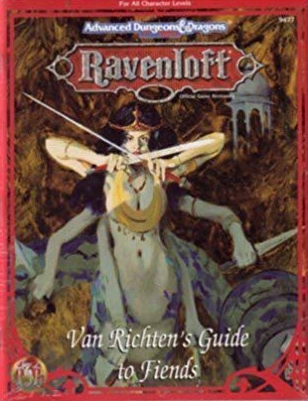 Since their introduction in the Van Richten's Guide, Ravenloft has gone to great lengths to make fiends diabolical again. There are no legions of hellspawn, no hells or heavens to travel to, no blood war cutting down thousands of faceless fiends an hour, cannon fodder for a multiversal conflict. Fiends in Ravenloft are rare, each a unique individual character, usually surrounded by a web of intrigue best suited for a high level party. However, this is still a fantasy setting, and making fiends rare and unique has made them less accessible for situations when the plot calls for it. Friendly contact with an evil outsider is a requirement to get into the Blackguard prestige class, and Pathfinder gave us many more classes and archetypes that assume these monsters are everywhere. If your plot calls for a pact with darkness but fiends are scarce, here are some creative ways to get the job done. 1) The Ebonbane Despite being trapped with in a magical crystal coffin in a very remote location, the Ebonbane's legend has spread among those seeking shortcuts to power. Those who come to bargain with him are frequently lulled by his imprisonment, thinking themselves in control as they slice their palms and place a bloody handprint on enchanted crystal. The truth is, they will never leave Shadowborn Manor unless he owns them, body and soul. What he offers: Black Blade magus archetype, enchanted magic swords. What he asks: the Ebonbane compels his agents to work against the Knights of the Shadows. They find themselves hating anyone wearing the insignia or cloak of the Circle. Over time, this hatred grows to overshadow any prior ambition that caused them to strike their original bargain. 2) Baltoi The Bound Slumber spell cast on Baltoi doesn't prevent her from dreaming. She has one of the few perpetual dream spheres in the Nightmare Lands, and while the Nightmare Court has tried to corral her influence by sequestering that sphere in a Mist Oubliette, she has corrupted some of their ennui. Born of nightmares and tainted with demonic essence, these vile creatures bring her dreamers to tempt and corrupt. What she asks: Baltoi demands that each of these diabolists perform a rite that grants her domain powers, or weakens the spells that bind her. She doesn't care what they do after that. What she offers: Many don't survive performing the rites she demands. Those that do gain access to the full spectrum of summoning from the lower planes and undergo two stages of transposition with a fiend of the appropriate alignment. 3) Tsvtieyft Schattendertodd Bearing a name that means roughly “Second Shadow of Death,” this tenebris elevates the depraved and disturbed into legendary serial killers, its “Lustmorde.” The legends of its proteges always mention the city of Morfenzi, so those who would seek it out know to look for it there. If your campaign calls for a Jack the Ripper or Sweeney Todd, it's easy enough to say they traveled through Morfenzi at one point, and followed the call of darkness underground before journeying on. What it offers: The Lustmorde are not usually spellcasters, so the gifts of the Second Shadow are those befitting a cinematic serial killer: mild damage resistance or natural armor, even bonus feats that like Diehard are perfect for a killer who just keeps coming. What it asks: The master of the Lustmorde demands not just a body count, but murder as art. It drives its proteges to take risks for more kills even as it protects them. Of course, all three of these fiends are powerful enough that they might grant any boon the plot calls for, and ambitious or desperate enough to assist anyone for any reason. While you can always have your would-be diabolist stumble across The Black Duke or Elsepeth, it's nice to know some fiends that are exactly as far reaching as you need them to be. Leyshon Campbell has been playing and writing for Ravenloft for over twenty years, from the Kargatane's Book of S series, playtesting D&D 3E in a Ravenloft campaign, to the ill-fated Masque of the Jade Horror. He married his wife on Friday the 13th after proposing to her on Halloween. By tradition, the first story read at birth to each of their three children was The Barker’s Tour, from Ravenloft’s “Carnival” supplement. He is currently running the “Queen of Orphans” Ravenloft campaign. Picture Reference: https://www.drivethrurpg.com/product/17529/Van-Richtens-Guide-to-Fiends-2e?it=1 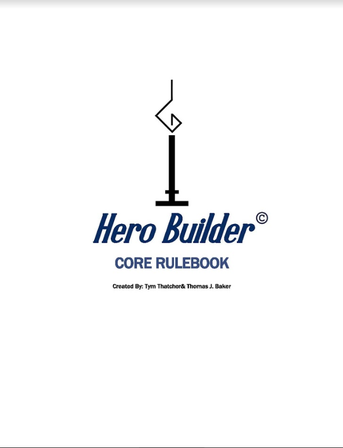 Character creation can be a truly enjoyable experience if done correctly, or a real chore otherwise. Sometimes this line is a fine one. Hero Builder, a new production by The Table Candle, endeavors to bring full customization to the d20 system experience. Much like Mutants and Masterminds or other similar point-buy systems, this game gives the power to the players in creating every aspect of their characters. Here are three reasons to give it a look. 1) Familiar Mechanics Most players and GMs today are at least somewhat knowledgeable about the d20 system, be it through D&D, Pathfinder, or the countless products released after the system went OGL. While it has a few tweaks here and there, the Hero Builder system is largely the same as other d20 products. The GM (here called the Hero Master) sets a DC for each action and the players roll d20 plus skills and bonuses. It is more akin to Pathfinder or D&D 3.5 than 5th ed. While many may see this as a step backwards, those older editions did allow for more customization and less simplification, something Hero Builder benefits from immensely. The game works best on a grid system; in our test game, players took advantage of the tactical options available to get the best use of their powers and abilities. 2) Unique Abilities Hero Builder contains a long list of abilities that modify or enhance actions characters can take, much like the proficiencies and feats of the aforementioned d20 games. These come from characters’ Bloodlines (custom races or backgrounds) or are added separately as special abilities of the character. When you create a Bloodline, other characters can be of the same bloodline and attain the same abilities, or generate their own bloodline. This not only helps create important distinctions or commonalities between characters, but also aids in world building. The Hero Master can co-opt the player-created bloodlines into their narrative to customize the game setting and provide touchstones for in-game cultures. 3) Sheer Breadth Of Power After generating the statistics and special abilities of characters, players then build their powers from the ground up. Powers are categorized by type, and each section describes how to build the power using points assigned at character creation. Powers cost a resource to purchase and a resource to use in game. So a player might make a bruiser who has a bunch of low cost survivability and damage enhancing powers, or another may create a single utility power and one massive damage dealing power, becoming the archetypal glass cannon. Players can create anything in between, adding healing, summoning, warding, or buffing powers to their repertoire. The balance seemed to be without major issue during out playtest, with each character able to perform as intended and to satisfying effect. Hero Builder does also have a few issues to work through in its current state. The complexity of the character creation process absolutely necessitates a “session 0.” During my second attempt at a playtest, my group sat down to make characters and play, but I had to give up in the middle of character generation because my players were getting too restless. The GM needs to sit down with each player individually to create their characters well in advance of the first session, and as such, the game does not lend itself well to one-shots. With so much time invested in creating unique and intriguing characters, players will be loath to abandon them after a single session, or more likely, loath to put the time in necessary to create them in the first place. There are other minor issues with the book, including typos and the like, but largely, Hero Builder brings fun customizable high-fantasy flair to the d20 system. The game includes three modes of play: commoner, heroic, and godly, though I highly recommend the latter two. If you’re going to loosen the reigns and let players create their dream hero, give them the points to go wild with it. Hero Builder is available here! David Horwitz is a gamer and freelance writer/editor with an obsession for exploring new forms of leisure. If you’re looking for an inquisitive mind and a deft hand, or just want to chat about gaming, contact him at www.davidhorwitzwrites.com/contact. Picture Reference: https://funnyjunk.com/Hero+builder/bmTzLoz/ 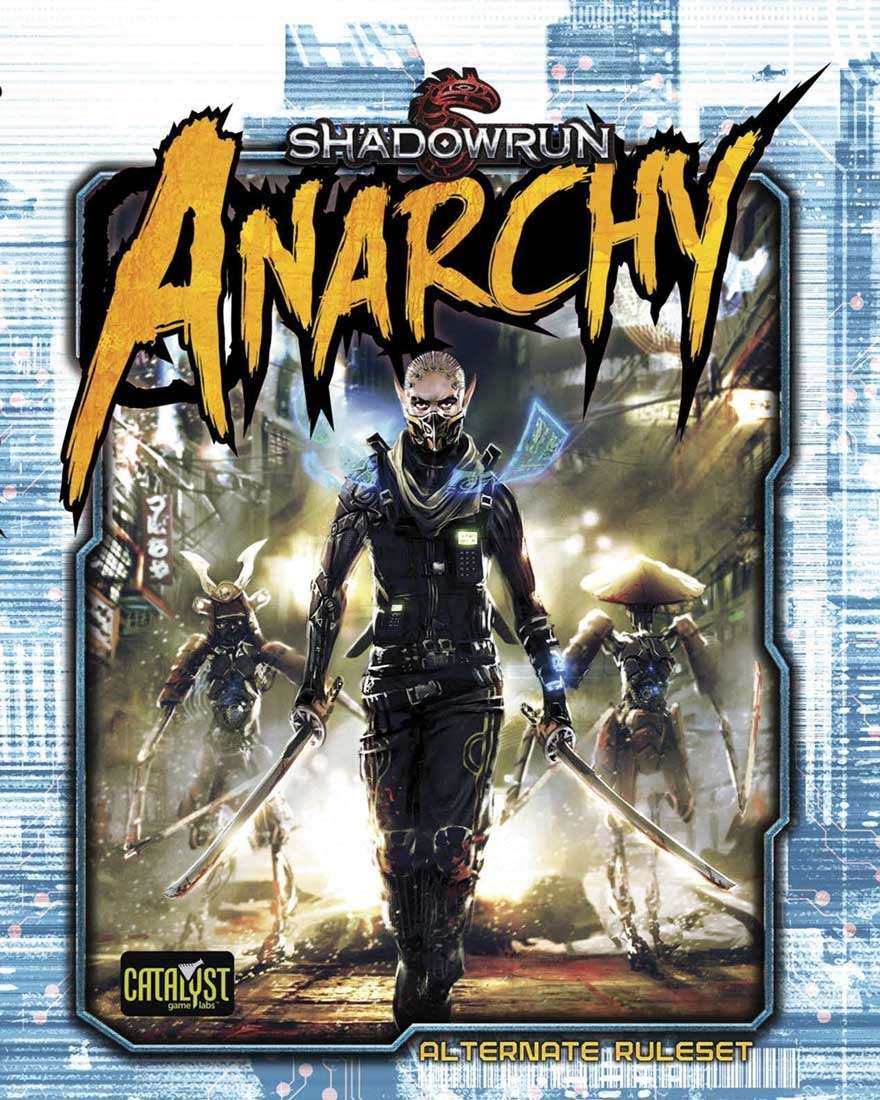 Shadowrun! It’s the oft overlooked and sometimes reviled cousin of Dungeons and Dragons. As a franchise, Shadowrun does everything Dungeon and Dragons does. It’s got novelizations, board game and video game spin-offs, and is even up to five editions! Some of these editions even vary wildly from one another to the point where you may as well be playing a different game when you use a different edition. Despite this, Shadowrun sometimes feels like it’s cursed to live in the shadows (Ha!) of Dungeons and Dragons. It’s not without reason, though. After all, their 5th edition core book is about 500 pages long, all of which you must have AT LEAST a passing familiarity with. By contrast, D&D has three core rulebooks, but you only need one of them to know the rules, and it can be treated more like an encyclopedia if you know what to look for. Enter Shadowrun: Anarchy. This is a ruleslite and scalable edition of Shadowrun. Today, we discuss the edition of Shadowrun that breaks all the rules, so strap in, chummers! 1) The Setting For the uninitiated, Shadowrun is a game set in a dystopian, cyberpunk future. To make this even more nutso-buttso, it’s our world 50 years from now with magic having returned to the world in 2012. Magic here refers to spells, otherworldly energy, and all manner of supernatural critters. Critters, such as otherwise ordinary wild animals that were made more vicious because of the influx of magic, vampires and ghouls whose conditions are literally a disease, or even the god-like Dragons who, in Shadowrun, are embodiments of magic itself. While technology advanced rapidly in Shadowrun, it’s still very familiar to the technology we have today. What’s a comm-link? It’s like a smart-phone. What’s the Matrix? The Internet. Why is everything, including my gun, connected to the Matrix? Probably the same reason our world has WiFi slow-cookers. Being set in an alternate version of our world works to great effect in Shadowrun; it makes everything much more immediately relatable. For anybody like our Corporate Overlord Josh Heath who is interested in promoting diversity and inclusivity, this is a very useful quality. If you’ve lived on planet earth, you have a place with some emotional attachment in Shadowrun, and that’s a good starting point for imagining yourself in a different world. 2) The Rules Are Still Very Similar To Core Shadowrun As mentioned earlier, Shadowrun 5th Edition has some dense rules, which makes it difficult to cut things out or simplify them without damaging the feel of the game. Shadowrun: Anarchy is a fine example of this; it drastically simplifies things, and something does get lost along the way. However, the end result still resembles Shadowrun: fists full of dice that either end in a total miss, or an accidental kill. There’s still the divide between magic and cybernetics; going too heavy on one makes the other impractical. That je ne sais quoi they call Edge is also still present, allowing somebody who’s otherwise not special in any way what-so-ever to somehow accomplish big things through dumb luck. Shadowrun: Anarchy is a narrativist take on Shadowrun, but it still still remembers that it’s Shadowrun, and most importantly, that it’s a game. The story is much more important in Anarchy, sure, but they don’t neglect players (such as yours truly) who want the figurative crunchy bits they can sink their teeth into. 3) Gameplay Is Scalable Shadowrun Anarchy, to contrast many of the other editions of Shadowrun, doesn’t have a lot of content; not explicitly written in the book, at least. There is a few basic lists of everything you’d expect: weapons, tools, spells, NPCs and sample characters. For folks who find these lists lacking and want more, Shadowrun Anarchy does include methods for padding them out. The first such method being a conversion guide, which describes how to bring a character, spell, or other thing from the more detailed versions of the game into Anarchy. Since Anarchy is the simpler of the two, this usually means stripping away details that Anarchy doesn’t accommodate, such as the difficulty of acquiring a given item or learning a spell. The second method is the “Shadow Amp” creation rules. Shadow Amp is the name Anarchy has given to spells, traits, cyberware, and other stuff that would otherwise amplify a shadowrunner’s abilities. These are guidelines which can be used to create anything your imagination can dream up. Though if you’re really pressed for time, such as introducing a strange new piece of technology or magical artifact mid-game, there’s even a guideline Shadowrun Anarchy has for completely improvising new things: it gives a 2 dice bonus (or penalty!) to whatever it sounds like it would. The conversion rules, character creation, shadow amp creation, and the various sample lists means that Shadowrun Anarchy comes with numerous ways to play, both out of the box and for those who want to take their game a little bit further. 4) It’s Not Dungeons And Dragons Dungeons and Dragons is the one game almost everybody in the tabletop gaming fandom has some familiarity with. Despite this, though, it doesn’t really do a good job as a “common language” among RPGs; it’s too wildly different from everything else that exists. In fact, it can be argued that there really isn’t any unifying thread between RPGs other than they’re played around a table and dice get thrown around. In other words: if you want to overall become better as a GM or a player, exposing yourself to different games is the thing to do. After all, different rulesets are suited to different games. Shadowrun’s tendency for rolls to be either wildly successful or hilariously pitiful allows for more incorporation of improvisation, especially in it’s more narrativist form as Anarchy. Any plans, be they the players’ or the GM’s, aren’t guaranteed to happen without a hitch. And if that sounds like a familiar scenario in other games you play, what better way to practice handling it than playing a game where such a scenario is commonplace? Aaron der Schaedel’s claim to fame before being the resident weeb of High Level Games was a series of videos he did breaking down the rules of Shadowrun 5th Edition. They’re still available on his now scarcely updated YouTube channel. Picture Reference: https://www.drivethrurpg.com/product/194759/Shadowrun-Anarchy  If you are familiar with my show, The Dragon’s Horde, then you will also be familiar with the concept of “the sleepy dragon list.” For those of you not in The Horde, the sleepy dragon list is a bit of an albatross hanging from my dungeon mastering neck. In brief, it is a shorthand list of ideas that I have for items, adventures, NPCs, and such. Items on the list include things like “He thinks he is a werewolf. He is not” or “weird (sexy?) key.” Then there is the infamous “sleepy dragon.” It has dwelt within the list for nigh 4 years now, and I have yet to remember what the heck I wanted to do concerning a sleepy dragon. Despite this, I have continued to expand my sleepy dragon list with tons of narrative seeds to get a story on track. One of the most frequent questions we get on the show is from new DMs asking how to get things started. To this I say, ask no more, friends; Pendragon has 7 adventure introductions to get the creative juices flowing! 1) The Herd In the city of Sherrack there is a small village nestled within a grassy basin. Here, traders and farm hands amble about their day selling, harvesting, and discussing the recent goings-on over at Gumby’s farm. As of late, the resident octogenarian and shepherd has had quite the ordeal keeping his flock alive. Every day or two several of his flock go mysteriously missing; stranger yet, more sheep emerge from the woods to to fill their place the following day. Little do Gumby’s neighbors know, that he had recently developed an acute fear of his impending mortality and has turned experimenting on his flock to find the secrets of immortality. And little does Gumby know that the Divine have their eye on him and have sent a couple watchdogs his way in the form of sheep whose wool cannot be sheared. 2) Maiden Voyage The Briny Steed had seen much better days on the sea. Now it rests patiently in harbor, waiting for its next (and probably final) voyage. Through bribery, philandering, and “oh, come on’s” the wannabe captain, Earl Stoutheart has managed to convince the party to commandeer the vessel and sail it across the Scattered Sea. The gang lies in the belly of the ship, waiting for nightfall, but when the time arrives, they emerge to a sight most strange. The ship has already departed on its own accord and seems to be in command of its own heading. It is a ship’s turn to do some commandeering for a change, and the party is along for the ride of a now sentient maritime vessel. 3) Alcohol Poisoning You haven’t heard of the Drinking Hat?! Why, it’s the finest saloon for miles around. Well, it used to be anyway. Built in the husk of an abandoned grain silo, the proprietors of the bar have converted it into a massive, multi tiered drinking house. Tubes snake their way from the mountain of barrels above down to the respective patron, but I wouldn’t go there if I were you. Recently, a group of thieves guilders met an unfortunate end after having their drinks. They could have chosen any number of barrels to sip from, but the poor sods must have gotten one that had been tampered with. Some say it was just bad luck, but I say differently. I say they were assassinated. On my honor as guild master Roan, those responsible for the death of my men will pay with more than just coins. 4) Showstopper The bardic hall in Brint is known nationwide for being the home to more than its fair share of celebrities. The flying Charnelli twins. Finnigan the wondrous. Heck, even Mertick and his performing bear Bathsalts have stopped by on occasion. No one expected a show stopper from Cleopatra though, but a show stopper it was. Everyone assumed she would live and die as a modest tailor until she took the stage to sing. The issue is, no one will ever know how the show actually went, because no one ever left. The morning after her performance, the the owner of the hall found the entire crowd dead in their seats! She has since been arrested for murder, but she says she is innocent and they simply dropped dead in the middle of her act. Cleopatra’s head is on the chopping block, and your party may be the only ones who can prove her innocence. 5) Repo Let it never be said of Matilda that she was anything but a saint. Known for her meek generosity, Matilda enlists the help of the party to help her with a job a little outside the capabilities of a sweet aged woman. The thing is, locals are tired of the stagnant water of the swamp nearby, and they plan on draining it completely. This is all fine and good for most people, but not ‘ol Matilda. She informs the party that she left a large cache of treasure in a lockbox somewhere within the belly of the marsh. Should they find it, she would be more than happy to give them a cut of the booty. The party drudges around in the murky waters, following Matildas instructions closely, but when they arrive, not only do they find treasure but also a corpse clutching the lockbox. Upon further investigation, it appears that the body is wearing a locket with a picture of Matilda inside. Upon further further investigation, the party hears a group of locals approaching. Upon further further further investigation, the party is discovered by the locals (Matilda included) ripping the lockbox from the arms of a dead man. “That’s Harold!” Matilda shrieks, “And that is my lockbox!” Turns out Harold had mysteriously disappeared a year ago, taking both his and his wife’s savings with him. Matilda weeps in the arms of the closest friendly local, but what’s that? Did she just glance over and smirk? 6) The Call Of Pazuzu (I incorporate something similar to the following in each of my campaigns. This cult is kind of like my signature; I would love to know if this inspired an adventure of your own). Your party is headed off for a new adventure in unfamiliar territory. About a day from their destination, a group of naked elves and humans approaches with open arms. They inform the party that they are thrilled to see new faces and are about to, in short, start a celebration. Whether they join the naked folk or not, the party has to pass by the strangers’ camp which has a massive, half finished totem looming overhead. The nudists are busily gathering scrap wood to finish the totem, and they gleefully sing, dance, and try to rope the group into helping. Despite their cordial, unsuspecting nature, these individuals have been waiting a year for that particular night to summon their favorite pestilence demi-god, Pazuzu! An otherwise silver moon slowly begins to shift to a blood red crimson; then, with the totem complete, Pazuzu in all of her pestilent glory animates the statue and chooses it as her personal avatar. Whoops. 7) The Bane Of My Existence “Sleepy Dragon” The role of an effective storyteller can be a daunting task, especially since most of the work of a Dungeon Master happens in real time, but having good narrative seeds chock full of possible hooks and intrigue can make the job that much easier. Nothing feels worse than getting to the table and not feeling like you have enough content to work with; veteran and beginner DMs alike know this. Hopefully you can find ways to plant these seeds if you find yourself in a pinch, and maybe you can start crafting a Sleepy Dragon list of your own! A brief aside, if you come up with a cool answer to the Sleepy Dragon conundrum, feel free to tell me about it at [email protected] so we can feature it on the podcast! Andrew Pendragon is a veteran role player, Dungeon Master, and story teller. His work can be seen featured on outlets like the Chilling Tales for Dark Nights podcast and Youtube channel BlackEyedBlonde, but he takes the most pride in his High Level Games affiliate podcast The Dragon’s Horde where he, alongside his co host, answers listener submitted roleplay questions and weaves them into a false-actual-play adventure! Picture Reference: https://www.deviantart.com/legend13/art/Sleepy-Dragon-s-Teddy-275967993 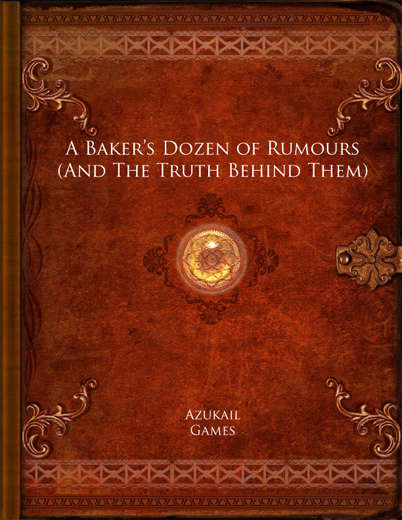 GMs the world over have felt the need for more and varied content to inject into their worlds. After all, even in the most linear of campaigns, PCs will delight in moving off the rails to inspect the living world around them. Take it from me: there is no amount of preparation a GM can do to account for every possible contingency the players can throw at them. That is why sourcebooks are so handy; they remove the burden of constant improvisation. Though this can be fun, it is eventually exhausting. What happens if your players keep poking around towns that are supposed to be simple stops on the journey of your intricately crafted plot? Eventually, all of us could use a little outside help. Here follows 3 enjoyable aspects of the small but eminently useful A Baker’s Dozen of Rumours (and the Truth Behind Them), written by Neal Litherland for Azukail Games. 1) Ease Of Introduction The entries in the list of rumours are focused towards a fantasy game of no particular description. There are Cardinals, ships, and half-orcs, to be sure, but each of these are interchangeable with other similar nouns. Trade out the Cardinal for a local temple priest, or the half-orcs for human barbarians. In this fashion, these rumours fit perfectly well in any fantasy game with naught but a minor alteration here and there. Need a little chatter for a port town’s common square? Try Black Sails and Bloody Currents, a rumour about a group of privateers that suggests they may also be the pirates they are hired to combat. Looking for something a bit more mystical? The Wizard Alshamus, a tale of a black tower and the wizard who resides there. He’s friendly to all appearances, but is there something sinister sequestered in his spire? These rumours can function even as lead ins to campaign beats you’ve already planned, as many possibilities are covered with these 13 entries. 2) Style And Substance The rumours and truths in each of the 13 tales are not only accessible, but also flavorful. The stories presented here most often skillfully avoid tropes while still featuring familiar archetypes. Sure, there’s a tale about a witch in the woods, but the witch is a man and is ultimately not responsible for the calamity at hand. The other twelve stories are equally well written. The premises are each interesting and the follow through on the truths do not disappoint. What’s more, the structure of the stories as rumour followed by truth is a clever way to allow the GM to quickly read the shorter rumour section during play, if need be. The truth sections can be absorbed during downtime or between sessions. 3) Mutable Truths The resolutions of each rumour are presented as possible scenarios, not required outcomes. This makes them endlessly tweakable for those of us who like to infuse our own creativity into sourcebooks. One notion I had was to create other possible outcomes to the rumours and let the party follow whichever path they prefer, or use the other as a source of red herrings. The versatility of the rumour/truth presentation allows for adaptability and variance so the GM can keep things interesting and thematic. This sourcebook is a great table mate. What’s more, I would like to see more of these bite-sized story seeds in this format produced for other settings. The only mild criticism I would level is more of a hope, and that would be that future entries include an illustration of each tale if possible. As it stands, there are only four in the publication, and as I like the minimalist style presented, I would like to see more. However, at the price of 2 dollars american, this sixteen page treasure trove of ideas is well worth it. You can check it out or pick it up at RPGNow, and find more of Neal Litherland’s works at his website. David Horwitz is a gamer and freelance writer/editor with an obsession for exploring new forms of leisure. If you’re looking for an inquisitive mind and a deft hand, or just want to chat about gaming, contact him at www.davidhorwitzwrites.com/contact. Picture Reference: http://www.rpgnow.com/product/246287/A-Bakers-Dozen-of-Rumours-And-The-Truth-Behind-Them?src=hottest_filtered 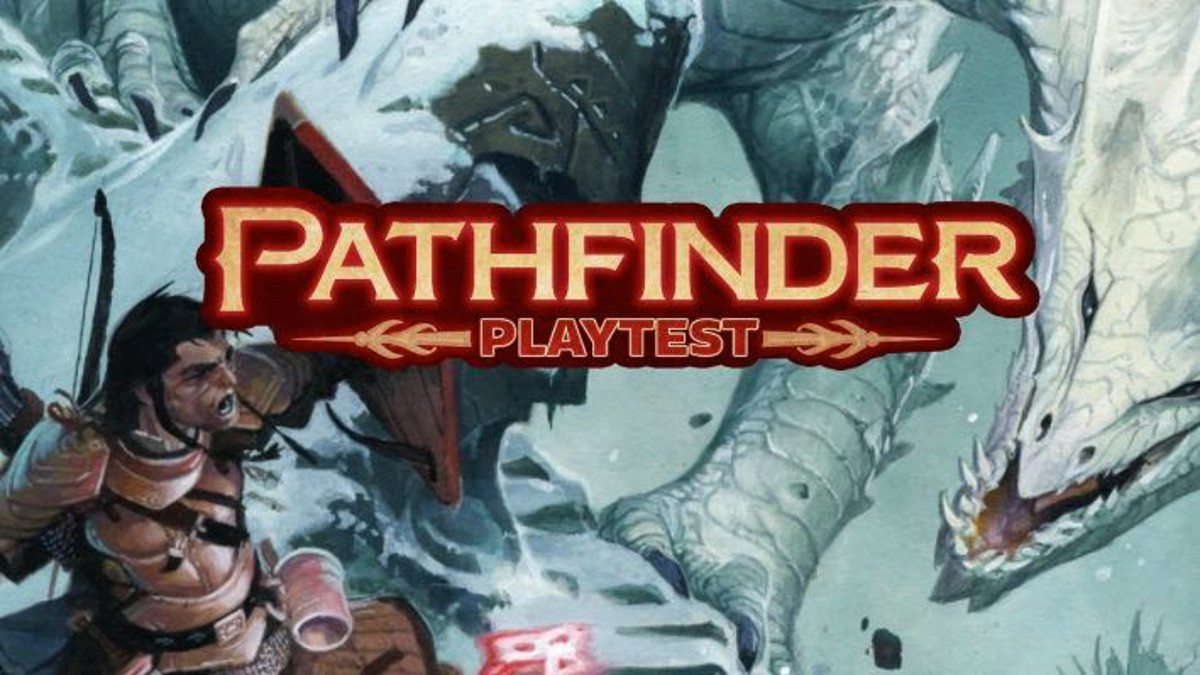 Anyone who knows me know that I'm a die-hard Pathfinder fan. I've been playing it since the end of the 3.5 era, when so many of us jumped ship from Wizards as a refusal to move on to their 4th edition. I've been quite happy with it, on the whole, and I even went on record back in the end of 2016 to explain Why Pathfinder is My Game of Choice. With that said, Pathfinder isn't a perfect game by any stretch of the imagination. So when I heard that Paizo was working on a 2.0 update, I was tentative, but interested. And now that the playtest rules have been released I can say without equivocation that I am the furthest possible thing from interested in this new iteration of what has long been my go-to game. Why? Well, I'll give you some of the major reasons, and the conclusions I drew after my read through. 1) The Feats Are A Mess Feats were your bread and butted in any Pathfinder Classic game. Whether you wanted to be a knight riding his destrier into battle, a master of metamagic, or someone whose unique bloodline had allowed them to awaken sorcerous power without having to take sorcerer levels, feats made all sorts of stuff possible. And which feats you took was entirely up to you. If you wanted to have nothing but combat feats (the equivalent of going to the buffet and loading your entire plate up with pork roast), you were more than welcome to do that. If you wanted to dedicate your feats to becoming a master of certain skills, that was also an option. If you wanted to bolster your class features by gaining extra rounds of rage, more uses of lay on hands, or bonus arcana points, you could do that too. You can't do that in 2.0. Oh there are still feats, don't get me wrong. But now we have class feats, we have ancestry feats (race feats for those not up on the new terminology), and we have general feats, along with a few other classifications. And rather than letting you pick whichever feat you qualify for every other level, you now get different types of feats at different levels. So it doesn't matter if you don't actually want to take any of the ancestry feats you have access to, or that you find your class feats useless until you hit level seven; you're stuck with them. This limits your ability to customize your character, and puts you on very specific tracks of advancement. Not good for folks who like the ability to load their plate however they want to in order to achieve specific results. 2) Where The Hell Are My Combat Maneuvers? One of the things I was most grateful for as a player was the invention of Combat Maneuver Bonus and Combat Maneuver Defense. Nothing was more nightmarish (or prone to cause arguments), than constant roll-offs between a player and the DM whenever the player wanted to do something other than hit the big bad with his sword, or cast a spell at him. So I was disappointed (but not surprised) to see that those things are absent from version 2.0. The maneuvers still exist, but they're buried in the skills section. Why are they in the skills section, you ask? Well, because now instead of making attack rolls, you make skill rolls for many of the combat maneuvers. Even stranger than that decision, though, is that when you make these rolls, you're going against your enemy's saving throws. Why? Hell if I know. There's another issue, though. Because in this version, you don't have skill points. Instead, your skills (and a lot of other stuff, but we'll get to that) are influenced by your proficiency level. There are five of them; untrained, trained, expert, master, legendary. These determine what bonuses you get on skill checks, but they also determine when you can or can't use them for certain things. And if you're not trained in Athletics, then you can't make a disarm attempt. Or feint in combat, if you're not trained in Deception. This is a very specific example, but it shows up throughout the game. Things that everyone used to be able to do (attempt a combat maneuver check, make attacks of opportunity, etc.) are now limited to very specific classes. So much like feats putting you on a certain track, there are options that were available to anyone regardless of class in Classic that are now kept behind glass unless you have the right proficiency level. 3) What's The Big Deal With Proficiency? In the Classic edition, proficiency simply means you can do something without penalty. If you're proficient in heavy armor, you can wear heavy armor. If you're proficient with martial weapons, then you can wield martial weapons. It did nothing, unless you didn't have it, which meant you were dealing with a non-proficiency penalty. In the playtest, this word does not mean what you think it means. Those levels of proficiency literally control all major aspects of your character. If you're untrained, you have a proficiency bonus of your character level -2. If you're legendary, it's your character level +3. Each level between changes that number by one. I'm not exaggerating here, either. Proficiency determines everything from your attack bonus with a weapon, to your bonuses on spells, to what your skill checks are, to your saving throws, to your goddamn armor class. It is the central mechanic that this entire playtest is built around, and it only comes in one of five varieties. This means that huge parts of your character just get automatic progression along your track. A 10th level character gets a +8 bonus on untrained checks from their proficiency. Doesn't matter if Hrothgar Bloodbeard had never attempted diplomacy in his life, he'll still be pretty okay at it. Call me a cantankerous grognard if you must, but I am not a fan of the idea that you just automatically get better at everything as you go up in level. Especially stuff that you've never invested time, resources, or effort in mastering. 4) No More A La Carte Options Another thing that I adored when Paizo brought out Pathfinder back in the early post-3.5 days was what I call a la carte options. Barbarians had a list of Rage powers, rogues had a slew of talents, ninjas got a list of tricks, alchemists got discoveries, and so on and so forth. This gave you a lot more control over the powers your character gained as you leveled, and you could use those powers in combination with feats to produce exactly the effects you wanted. As with anything else on this list I was a fan of, that's gone too. While a lot of these choices have made it to version 2.0 as options you can take, you aren't allowed to freely choose from the list like you were earlier. Barbarians, for example, are now locked into a choice of totem (which was completely optional in the previous edition if you never wanted to take a totem-style power). Rogues receive a number of options to choose from, but they are only available at certain levels. Alchemists... don't even get me started. While they're now a base class, their progression gives me a headache every time I try to read through it. It is the same for feats. What was once a wide open menu of choice where you could pick whatever you wanted as long as you qualified for it has been narrowed down to a bare handful of options, and a lot of them are arbitrarily shut behind a certain amount of level progression. And to those of your clearing your throats and asking if I'm comparing a single book to the huge morass of a decade or more of Classic publications, no, I'm not. Core book versus core book, you had more freedom in the older edition than you do now. All the stuff that's come out since the core book was published is just frosting on top. 5) There is No Multiclassing (Not As We Know It, Anyway) Real talk here. In the decade and a half since I got my first set of dice, I've played between one and three single-class characters. Every other character I have ever brought to the table has been multiclassed. So when I finally got to the section on leveling up, I noticed right away that this playtest assumes you are never going to deviate from the class you started in. But what if you really want to? Well, you can take an archetype. What does that mean? Well, it means you're technically still taking levels of your original class. But now you're replacing your class feats with the class feats that belong to your archetype. And let me tell you, this method is an out-and-out dealbreaker from where I'm sitting. It's messy, overly complicated, and sends a very loud, very clear message that if you start off as a fighter, barbarian, or wizard, then you'd better get comfy, because acquiring the specialties of another class is going to be a headache for you and your DM alike. … And Then It Hit Me There came a moment, around page 390 or so, where I realized something. In addition to all the red flags I've mentioned, there were a dozen little tweaks that felt familiar in their annoyance. Rage that lasts for an arbitrary amount of time, instead of increasing with you as you level? Sneak attack that requires you to use a ranged, agile, or finesse weapon? Three or four different levels of dying, fear, or fatigue rather than specific conditions that you are or are not in? This is not Pathfinder... this is Dungeons and Dragons 5th Edition. As I've said time and time again, the Classic edition was what we got when Paizo put Dungeons and Dragons 3.5 on the table, and gave it some juice. It came out bigger, tougher, and just as flexible and customizable as it's ever been. It was also just as complex, and required just as much investment. The second edition, though, has nothing to do with 3.5 at all. It's Paizo giving Wizards of The Coast's 5th Edition property the exact same treatment and hoping that the lightning will strike twice. Why? No clue. Because when the lightning struck the first time there was a big audience clambering for support for a system that Wizards had dropped... but 5th Edition is riding high right now. It is, though it galls me to say it, probably the RPG of choice for the current tabletop renaissance. However, it holds that title because it is basic, it is clean, and it is literally something you could teach a person who has never gamed in their life with maybe a 15-minute run down. Reading through this playtest, it has all of the complexity and confusion of Pathfinder's elaborate rules, but none of the simplicity and ease of learning that 5th Edition has. The mechanics have different names, and many of them have been split into three or four parts, but this is just 5th Edition with a bunch of gears glued on it to make it feel different. Maybe I missed something in the lead-up to all this, but no one mentioned to me that the company was changing out the engine that ran the game, and which formed the core of what made everything else run. Because no matter what edition you're playing, if you want a 3.5 engine, you are not going to get those results running a 5E motor. Folks who read my last post, 5 Things I Hate About Dungeons and Dragons 5th Edition, will know exactly how damning this next statement will be; I would never play this game over 5E. For more of Neal Litherland's work, check out his gaming blog Improved Initiative, or take a look at his archive over at Gamers! Picture Reference: https://geekdad.com/2018/03/pathfinder-version-2-0-playtest-anounced/ 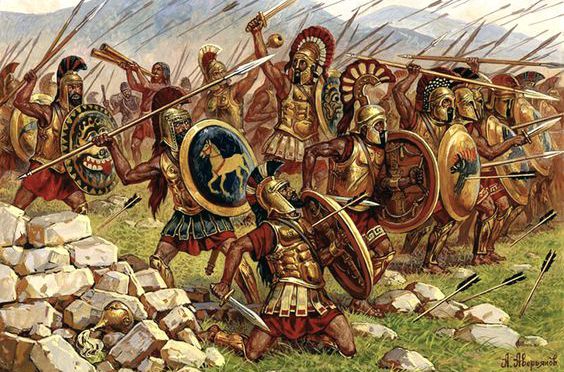 Human history is filled with places and events that are so interesting and amazing that they just invite themselves to become the background of an RPG adventure. I don’t even mean specifically fantasy adventures; what has happened in these instances will happen again, certainly, because we were humans then, are humans now, and will be the same faulty humans for a long long time to come. Quick note: History is subjective to begin with, as it is dictated by the interpretation of the narrator. I am completely aware that in some (perhaps all) of the places and events I describe below, pretty nasty things were happening to people, due to discrimination, slavery, and, well, genocide. I don’t refer to these, not because I don’t think they are important or relevant, or am trying to make light of them, but simply because I’m not an historian, would not know enough about them to start with, and would therefore not be the best person to begin this conversation. I’m simply picking broad events and areas and seeing what could be used in a narrative. 1) War Of The Roses/English Civil War This is so much like Game of Thrones that… well, George RR Martin is actually on record saying he loosely used this as inspiration for a Song of Ice and Fire. It was family against family, brother vs. brother, with the ultimate prize being the English throne. The GoT connection is the best possible description. Dozens of noble families, whole branches of royal houses simply disappearing overnight, in some pretty heated battles. The Wikipedia entry has a family tree that just makes your eyes water with the effort of following who is cousin to whom. If you want an overarching conflict, with lots of deaths and noble houses, this is your jam. 2) Thermopylae 300 Spartans fighting off a few tens of thousands (estimates vary) of Persian soldiers. This battle has been much embellished over recent years (with the movie 300, based on the graphic novel of the same name, itself a highly built up adaptation of the known parts of the battle). It would be the perfect seed for a few characters against an army. There’s not a lot of RPG material here as it was just a battle, but I’ve always thought that having the players as, say, spies or messengers moving against the background of the battle would be really cool. 3) The Byzantine Empire This one has ‘fantasy RPG’ written all over it. From the exoticism of the ‘east meets west’ culture and language, to the gigantic palaces and temples, if you have a look at a lot of RPG core books, specially images of markets and buildings, you can easily see how Byzantium is a bit of an inspiration. On any random street, you could find products from all over the known world, and the palatial intrigue was ridiculous. It got so bad, the local rulers had to hire Viking mercenaries because everyone else in the area wanted to kill them. A good inspiration for cities, markets, commercial areas, etc. 4) Rome This one has a lot of caveats, as so much of the City by the Tiber has been used in the past, by pretty much everyone, from RPG writers to Napoleon. If you want an ancient city, with streets, temples, slums, docks, etc, this is your standard. 5) The Silk Road Although it was totally not a single Road, the Silk Route was in fact a series of trading posts and small stretches of road works that connected China to the West. This is the best possible scenario for trading stories/escort stories. It even has loads of ghost towns, built and abandoned, as the tides of trade ebbed and flowed. 6) The Great Wall of China Just using a monument as a starting point, I mean, picture it: a mysterious, highly advanced kingdom decided to turn inwards and focus on itself and is so paranoid about attacks from the outside that it builds a gigantic series of walls to keep everyone else away. The functionality is immaterial. Imagine cresting a hill and seeing a wall that went from horizon to horizon. 7) Edo Japan This is so appropriate that is has already been adapted to RPG’s, even to D&D. This was the time of the samurai and ronin and noble battles and ninjas. A lot of it has been exaggerated and embellished, but it’s still a background rife with warriors and noble ladies doing martial arts and emperors and so on. What other historical places or times have you used in games, or indeed, think that would be good to use in games? Rui is a Portuguese scientist that, after ten years doing strange things in labs, decided to become a teacher. Then, three years ago, like he was bit by a radioactive D20, RPG’s came into his life, and he’s now juggling teaching, playing and GMing quite happily. He lives in the UK with his partner Joana, an ungodly number of potted plants, 4 to 5 RPG’s at various stages of completion (and across as many rule systems), and maps, cursed idols, evil necklaces, and any other props he can get his hands on. He’s been writing for HLG for a couple of years, and is one of the resident vloggers. He can be reached at @Atomic_RPG. Picture Reference: https://ludwigheinrichdyck.wordpress.com/2016/01/19/the-battle-of-thermopylae-480-bc-defending-the-pass/  There are plenty of fantastic systems available to gamers that come in a variety of complexities. While many of the “crunchier” games offer a lot to gamers, I personally find that rules-lite gaming offers just as much, but in a different way. These games often let myself and my players tell a good story without worrying too much about how far they can move in a turn or how many times they can cast a certain spell. An upside to rules-lite games is that they are easy for everyone at the table to grasp so you can jump right in. To sweeten the pot, many rules-lite games can be had for free. Below are five of my personal favorites. All of them are also “generic” meaning they can handle just about any genre you throw at them! 1) FATE Accelerated One of the most popular narrative systems available, FATE Core is derived from the FUDGE RPG and uses a nifty system of player defined abilities called aspects. FATE itself is rules medium, though it relies heavily on the imaginations of the players and Game Master. Evil Hat Productions then released a lighter version that was much easier to take on the go and accelerated gameplay. This version uses the aforementioned aspects and 6 approaches that define how your character will attempt to perform a task. Will they be forceful? Flashy? These kind of approaches determine the narrative direction for the action taken. The game itself is released under the Open Gaming License. 2) Mini Six This fantastic little gem was created using the Open D6 system, which originated as the Star Wars RPG by West End games. While Open D6 itself is available as a system reference document, I personally find Mini Six to be a better and more streamlined version of the game. The system itself uses a dice pool, allowing players to roll a number of d6’s equal to their stat+skill and add the results together. It’s a simple and straightforward game with several example settings and various optional rules included. 3) Risus This wonderfully goofy game has been around for 25 years and is still going strong. It is a whopping four pages long, with all the rules you’ll need to tell a great story. This game also relies on a dice pool mechanic where players roll a number of d6’s equal to their most relevant stat (referred to as cliches) and adds them together. The main pull of the game for many players are the cliches, which are player defined stats that can range from something like “Lady’s Man” to “Lovable Cyborg Bear.” Risus has a thriving community and is worth checking out if you like very simple and narrative games. 4) PDQ Prose Descriptive Qualities (PDQ) is another RPG that uses player defined stats (called Qualities) that range from Poor to Master level. Each level grants a penalty or bonus on a 2d6 roll. When a character fails at a task, they decrease the level of the the Quality rolled, which works well narratively to showcase how they are worn down by their failures. Several fantastic games have been made using this engine including the fantasy game Zorcerer of Zo and the superhero powerhouse, Truth & Justice. 5) Adventurers! This game boasts itself as an RPG in just two pages. While this is mostly true, it’s worth noting that the player’s guide and the Game Master’s guide are each two pages. The core mechanic is simple: roll 2d6+stat; a seven or higher is a success. The system offers skills that grant special abilities to make your character stand out more. While the game is rather small, it is most definitely complete and offers a variety of simple and compact rules to handle various scenarios. While the basic aesthetic is fantasy, the game can handle any genre. There are a plethora of mini settings for the system that can be had on the cheap as well. It is my firm belief that an amazing campaign can be had with nothing more than a few friends, dice, and some scrap paper. There isn’t really a need for stacks of books, miniatures, and an in-depth understanding of the game in question. So what are you waiting for? Go tell a story. Nathan Carmen is the founder and head writer of the Indie RPG company, Tricky Troll Games. Nathan loves building worlds and improving his craft when he’s not busy parenting. Reach Nathan at [email protected] or check out the TTG website at https://nathanccarmen.wixsite.com/trickytrollgames Picture Reference: https://www.evilhat.com/home/fate-core-kickstarter-highlights-3-fate-accelerated-edition/ 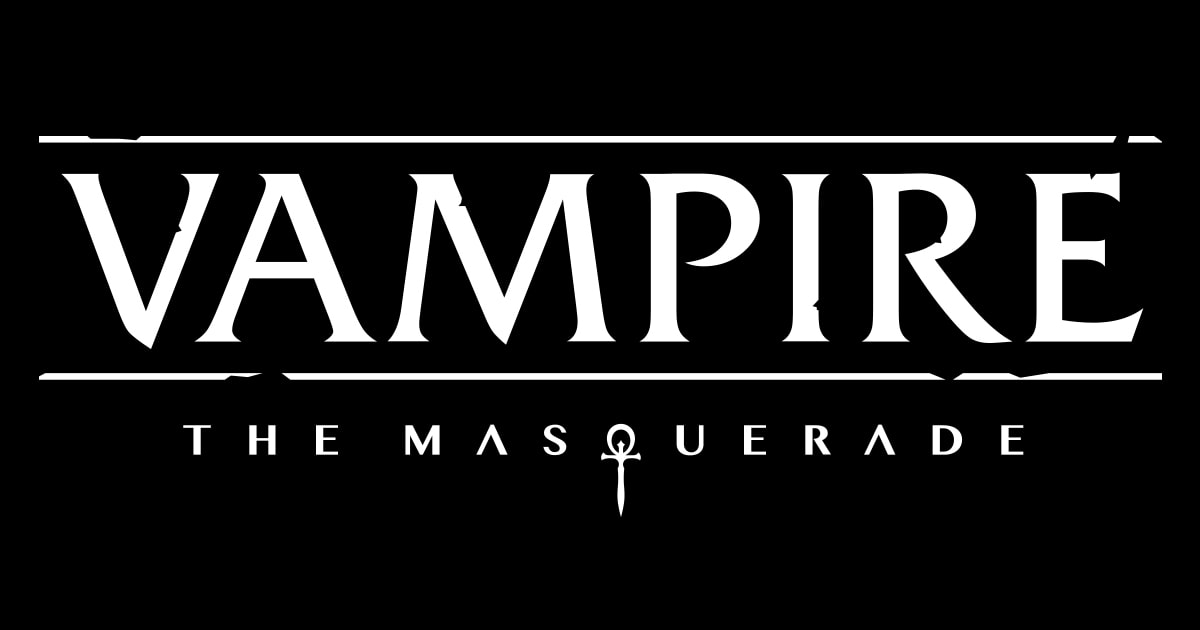 Before we get into the interview below, please come by and check out www.hlgcon.com We are running this convention in Atlantic City, NJ October 12-14th 2018. We’ll be running a Blood and Betrayal Chronicle larp, as well as a ton of other cool games, including V5! For those of you that have been following our site for some time you know that I (Josh Heath, our humble COO) is deeply involved in the World of Darkness as a gamer and as a community member. So, I have been following the development of Vampire: The Masquerade 5th edition (V5) very closely. There have been ups and downs and twists and turns as this project has come to the world but I wanted to speak with some of the folks at White Wolf involved with the production of this game to get their views and to hear some more about where the game is going as we are so close to its release. We are joined by Matthew Dawkins (Senior Community Director at White Wolf and a writer on V5) and Jason Carl (V5 Producer, CEO of By Night Studios, and Executive VP of Community Development at White Wolf). Gentlemen, can you tell us, in two sentences what V5 is and why it is important? V5 is the newest edition of one of the greatest RPGs ever created, Vampire: The Masquerade. This edition is important as it delves deeper into the nuances, the tragedies, and horror of playing vampires in a modern world. How does this book balance the darkness of the World of Darkness against the troubles we see around us in our real world? Matthew: It's a fine balance, with some elements of the Second Inquisition coming from real-world agencies and paramilitary groups, and some elements of the Vampire saga made from wholly new imaginings. We mix the mundane with the supernatural. We do need to be careful to always punch upward, highlighting the struggle of neonate vampires (outsider to begin with rendered even moreso by an elder-run, elitist society) and condemn groups in need of such treatment. Undoubtedly, real world situations such as the resurgence of the far right, street protests, corrupt banks and economies, and the abandonment of society in exchange for "me and mine" thinking are reflected in some aspects of Vampire, as they always have been. We need to tackle such issues with care and a mature attitude, and give the tools to players to do the same thing. Jason: While crafting V5 we saw Vampire: The Masquerade first edition as our touchstone, both in tone and message. Vampire's original creative mission was to encourage us to explore the nature of evil in many forms, including personal, cultural, and institutional, and to do so through the lens of the monstrous vampires. That hasn't changed and we try to be as thoughtful and conscientious about it as were the writers in whose footsteps we follow. We see ourselves as stewards and custodians of their legacy, and we want to be as thought-provoking as they were in portraying real-world evils as problems in the game, without ever being gratuitous. How are you ensuring player safety, consent, and engagement with a product that tackles dark horrific storylines? We've tackled this in a few ways. There's very little egregious material in the core book. While we have some material some readers may find offensive, we attempt to couch it in mature context. We have a strong foreword covering the subject of consent, adult material, and how to play the game responsibly. We also have a several pages long appendix in the core book that handles matters such as consent, controversial and offensive elements in games, mature conduct, and similar. We hired Jacqueline Bryk to write it after she co-wrote similar guidelines for Changeling: The Lost Second Edition and after I hired her to do the same on an upcoming sourcebook for Kult: Divinity Lost. Jax is an excellent writer with a real expertise in the subject matter of handling traumatic material in roleplaying games, and her contribution has been fantastic. What is updated? Why should I buy this if I already have 27 years of books sitting on my bookshelf, right now, calling to me? The setting has gone through some changes in the last couple of decades, many of which were alluded to in Beckett's Jyhad Diary! A lot of elders and Methuselahs have been "Beckoned" to North Africa and the Middle East by someone or somethings; the Sabbat have in large part pursued them in what they call the "Gehenna Crusade," leaving many domains scarcely populated with Kindred; London and Vienna have been targeted by the Second Inquisition, a new body of hunters; the Tremere are splintered into factions; some clans have switched sects; we have exciting new mechanics for Blood Potency, Hunger, creating your own Disciplines via Blood Alchemy, and so much more. Tell us about the most radical mechanical change that this edition of the game is bringing to the table? Matthew: For me, it's Hunger. At first I was on the fence regarding this one, but seeing it in play and running games including it really emphasised the vampiric need to feed. In the past, it was a bean counting exercise. In V5, Hunger is ever-present. It doesn't disable the game or make your character a drooling beast, but it does add an air of danger to an already tense situation. I'm also a big fan of Memoriam, allowing characters to indulge in flashbacks to answer questions and solve conundrums, as well as providing fun elder play. Jason: (in addition to the above) For me one of the best and fundamental mechanical changes is that creating characters and coteries is now a group activity by default. You can still create a character in isolation, but the rules for making characters and coteries as a player group are so fun and engaging that it's easily my favorite new mechanic in the entire game. Roleplaying should always be a fun, collaborative activity, and these new rules support that idea very strongly. What is staying largely the same? Matthew: The Camarilla, the Anarchs, and the Sabbat are all still around, even if they've undergone tweaks. No clans have been annihilated. Vampires still can't daywalk. And Mithras will rule London forever, in whatever form he takes. Jason: In terms of play experience the game is as flexible as ever. Moreso, really: V5 can be played as a sweeping, international blood opera of deep political conspiracies, or as a super-gritty, hyper-realistic street drama of intensely individual stories, and everything in between. The book is being printed, right now, the PDF is due on 2nd August to pre-order backers, that includes myself. Tell us about the one thing we should read first? Matthew: I always tell players to read the "splats" — the clans — first and foremost. People want to know their playable options and I've seen new players read these ones when we've done playtests, and immediately come up with a character concept and ideas for their role in a chronicle. It's been great to see. Jason: I like to encourage players to browse the clans first because they provide the best overview of what kinds of stories you'll tell in V5, but also check out the Coterie Types for inspirations about how your characters will all interact together. This setting has a large community, some might call it fractious and be close to accurate. Can you tell us more about how White Wolf is moving forward with community engagement? Matthew: White Wolf definitely made some mis-steps at first by not engaging the community more closely. Now myself and Jason have taken the lead on this, we're rolling out the Gentleman's Guide to Vampires series (and look at the comments on those videos if you want to see something uplifting), clan teaser videos, regular posts on our Facebook, Twitter, and Instagram, and the White Wolf website has undergone a major overhaul. This is just the start of reaching out to the community, finding out what our fans wants, and responding to their concerns. We are also hiring several community managers to help with this task. We hope to see live streams, AMAs, interviews, and gaming advice to come! Jason: (in addition to the above) We are planning better convention and event support, including a volunteer Storyteller demo program. Why would someone want to be a community manager for White Wolf? Matthew: You mentioned we have a fractious community and you're correct. Being a community manager wouldn't be entirely peaceful. That said, it will be interesting, challenging, and exciting to work for the company responsible for developing Vampire: The Masquerade. The role gives you a look into our direction, helps you engage and enervate the community, and puts you in a position where you can assist all our fans. Jason: We have an incredible number of fans who are extraordinarily passionate about this story world and its games. Becoming a community manager is one of the best ways to share this passion, to channel it into activities that can grow and strengthen the community, and invite even more people to share it with us. What can we expect next as far as books? We aim for the Camarilla and Anarch books to come out before the end of 2018, and hope to get the Sabbat book out by close of 2019. There will also be a quickstart chronicle (already written) available for download from worldofdarkness.com. As for the rest? You may just have to wait and see.... How does the Larp management of Blood and Betrayal Chronicle tie into this release? Does it? The Blood and Betrayal Mind's Eye Theatre chronicle is still in development. We realized that, as eager as we are to make it happen, we needed to focus on completing V5 and getting it out into the world. Now that V5 is a reality, we can give some love again to this LARP chronicle concept. If a person that is reading this hasn't pre-ordered the book, where should they go to pick up a copy? V5 will start appearing on the shelves at your local hobby game retailer in mid-to-late August, depending on where you live. If your local retailer doesn't carry it, you can ask them to order it from their usual distributors. You can also order it directly from Modiphius, our distribution partner, online at https://www.modiphius.net/collections/vampire-the-masquerade. If you'd like to buy just the PDF, you can get that online at worldofdarkness.com, starting on 2 August. What, if anything, can you tease about Werewolf: The Apocalypse 5th Edition? Matthew: We have been listening to our community, what they want, what they don't want, and are determined to deliver a product that does not court controversy for controversy's sake. It's always tricky when creating a new edition of a game not to be entirely swayed by shouting fans, but as long as the creative vision is mature and responsible, as well as exciting and engaging, we're confident people will love it. The next edition will be fast, desperate, and as rage-filled as the Werewolf you've come to know. Jason: Werewolf: The Apocalypse has a fan community that is intensely passionate about the Garou and their story, and we want to take their opinions into account as we craft this new version of the game. As with Vampire, the setting will be updated to the modern day, and that means looking hard and realistically at many of the environmental and ecological problems of the world--and their causes--through the eyes and actions of the werewolves. What is the last thought you'd want to leave someone with after reading this interview? Matthew: Thank you so much for your interest in V5! We really want you to pick it up, run it for your friends in person or online, and tell us (and everyone else!) about the good time you've had. RPGs should bring people together, and we hope to do that with all our games. Jason: We hope that you'll enjoy V5--if you're not sure about it yet, get the free Quickstart, round up a few friends, and see how it plays. Then tell us what you experienced. And if you are playing V5, we want to hear from you about what you like and what you think could be improved. We especially want to hear about the stories that you and your friends are telling together! Josh is the Chief Operations Officer at High Level Games. He is also the madman in charge of www.hlgcon.com please come by and purchase some tickets and come play games with him. 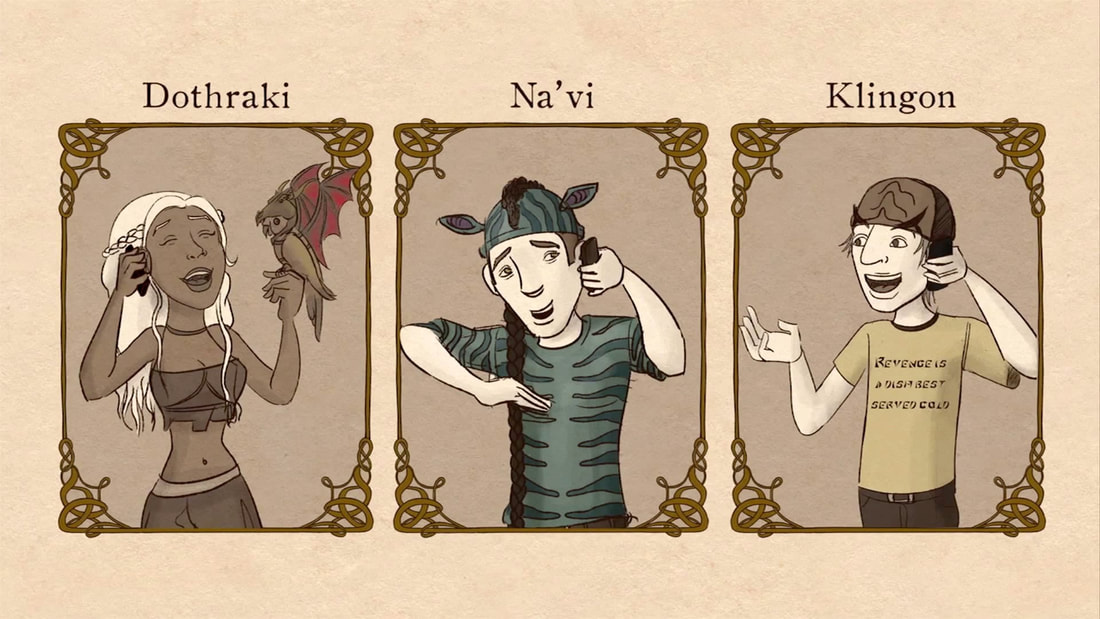 When I started gaming, I loved to read the early Dragon anthologies for their insight into the early game. One of my favorite anecdotes was about a Lake Geneva player who took “wall" as a language, and proceeded to interrogate dungeon walls as to what was behind them. His creativity was only matched by the DM, who had all the walls reply in drunken slurs that they had no idea because they were all “plastered.” Apart from comic relief, this scenario raises the question of the role languages might play in various games. The Ravenloft setting dispensed with the simplicity of a “Common" tongue found in other settings because it clashed with the insular, xenophobic nature of the setting. This has forced players to strongly consider their choices for what many other settings consider an afterthought. To make sure you are covering all you bases, consider the 4 S’s. 1) Secret Societies Like Druidic in previous editions, knowledge of a particular language is extremely useful for identifying who is part of your secret club. Hidden messages become much more secure, as the eccentricities of a language are far more confusing than any code. Even when translated by magic, cryptic jargon or slang still remains, such as with Navajo code talking. This also adds to the flavor of the secret society, as the language in question is tied to pragmatic or philosophical roots of the group. Vampyrs of Falkovnia might use Wardin (the language of their leader’s lost world) as a way to express their ambitions, and a prospective Knight of the Shadows might be expected to learn Nidalan before the annual trip to the The Shadowlands. 2) Status It was suggested in the Ravenloft Dungeon Master’s Guide that Draconic--the language of arcane spellcasting--was one possible bridge between the diverse patchwork of peoples scattered throughout the Mists. An example of this was given in Van Richten's Arsenal, when Celebrant Agatha Clairmont and Gennifer Weathermay-Foxgrove found it the only common language they could write letters in. In academic circles, knowledge of Draconic or other dead languages might be a significant status symbol. After all, Mordentish may be the language of scholars across the Core, but in Mordent it’s the language of everyone, from the dean to the drunkards. Dead languages are a much better reference than living ones when you are trying to sort out the ones who had quality schooling. 3) Summoning Summoning spells get short shrift in Ravenloft due to the restrictions on summoning extraplanar creatures, but there are ways around these restrictions. The simplest is the Entities from the Id feat from the RLDMG, which allows the full summoning list to anyone who has failed a Madness check. This has been expanded on for Pathfinder to allow for the Summoner core class using madness in a character backstory. However you choose to specialize in summoning, many summoned creatures need direction in their own language to do anything other than attack, so language slots add a lot to their versatility. 4) Sundries Sometimes the language slot is the best place for a language-like skill that doesn't fit elsewhere. Vistani ‘tralaks’ or trail signs don't have a ‘spoken’ form, but this is a language available to PC’s, unlike Paaterna. Like gnomes speaking to burrowing mammals, there might be a character with a supernatural ability to understand the speech of the undead, the shared chorus of elementals, or some ancient language from a past life. I thought about that guy who talked to walls when a player unfamiliar with Ravenloft put drow sign language in their list of languages. Drow are barely even legends in Ravenloft, so this was perhaps the least useful language choice possible. However, it inspired me to think about the role of sign language in the Land of Mists, and I created an esoteric sign language for this character, one used by La Serrure et Cle due to problems speaking while masked (and to further hide deformities that affected speech). Years later, “Surreran Sign" continues to be an interesting feature of my games. Consider this challenge next time a player proposes a rare or unorthodox language. There could be a great story there, and at the end of the day, great stories are what roleplaying games are all about. Leyshon Campbell has been playing and writing for Ravenloft for over twenty years, from the Kargatane's Book of S series, playtesting D&D 3E in a Ravenloft campaign, to the ill-fated Masque of the Jade Horror. He married his wife on Friday the 13th after proposing to her on Halloween. By tradition, the first story read at birth to each of their three children was The Barker’s Tour, from Ravenloft’s “Carnival” supplement. He is currently running the “Queen of Orphans” Ravenloft campaign on Discord. Picture Reference: http://termcoord.eu/2016/04/j-r-r-tolkiens-guide-to-inventing-a-fantasy-language/ |
All blog materials created and developed by the staff here at High Level Games Archives
April 2023
Categories
All
|
Proudly powered by Weebly
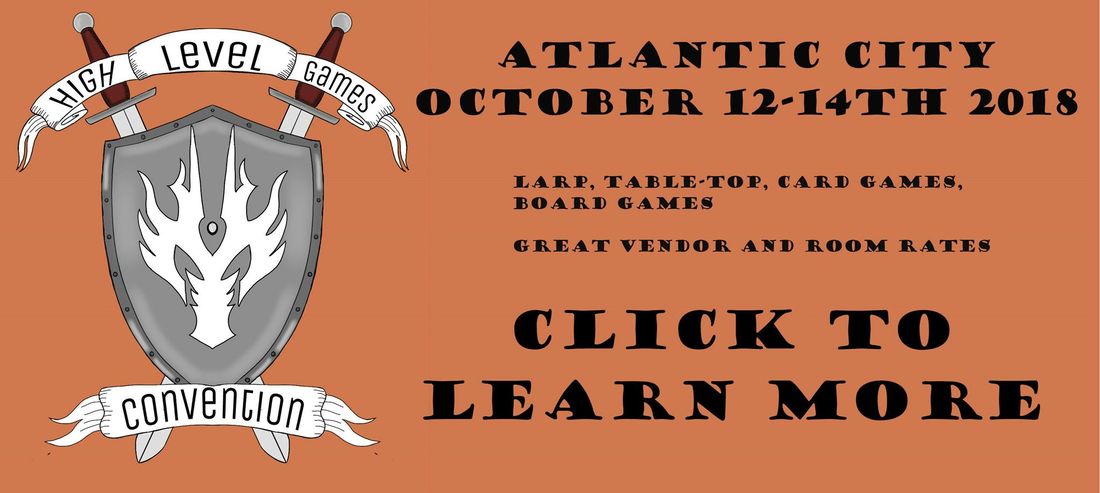
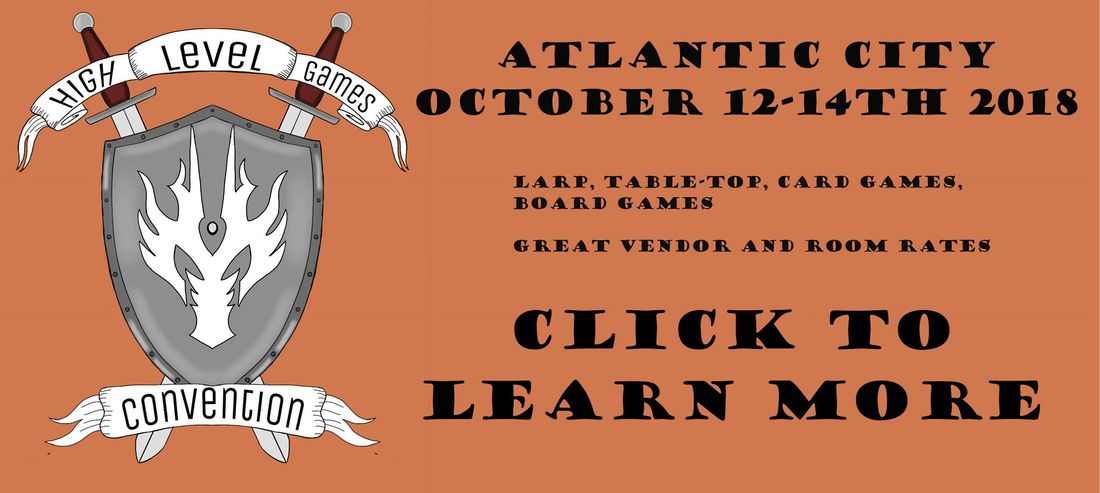
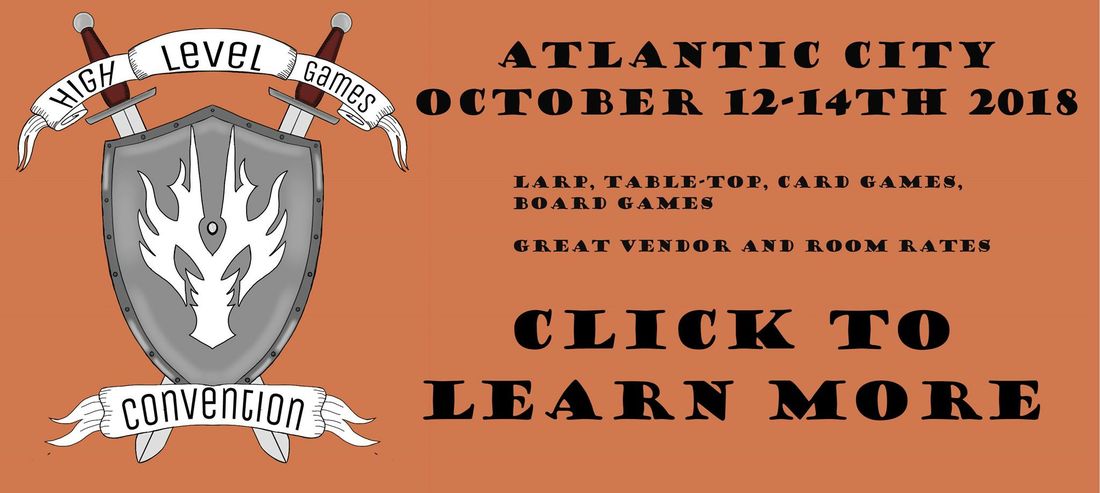
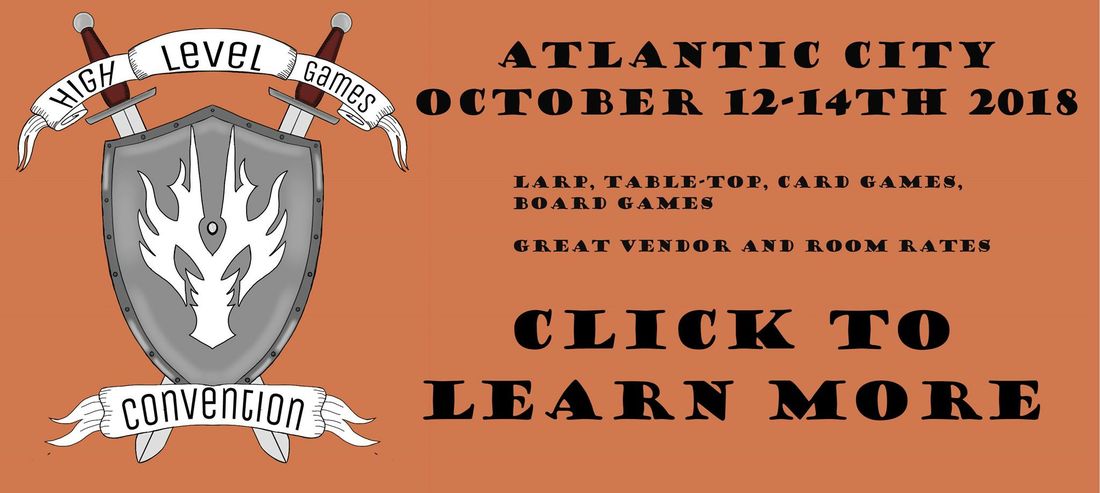

 RSS Feed
RSS Feed